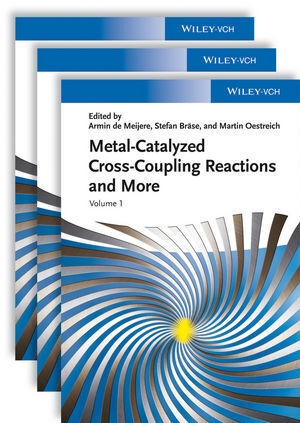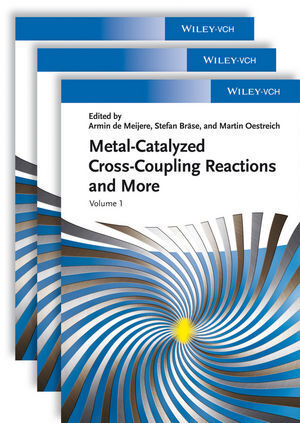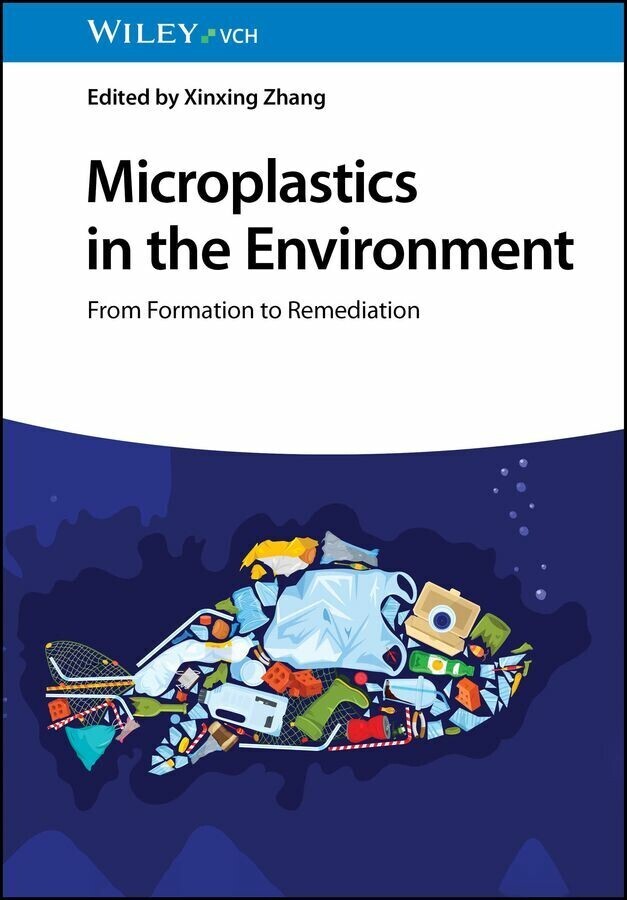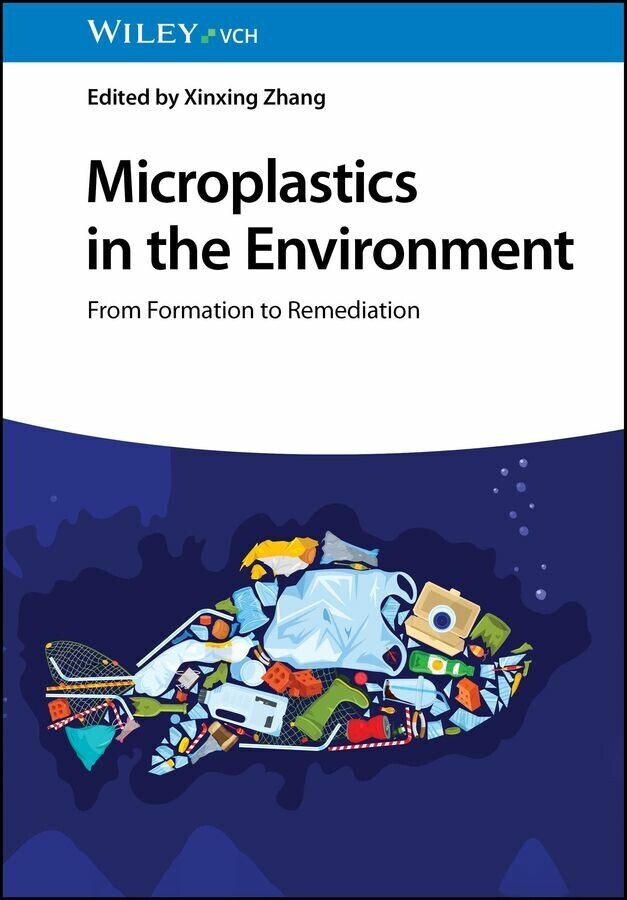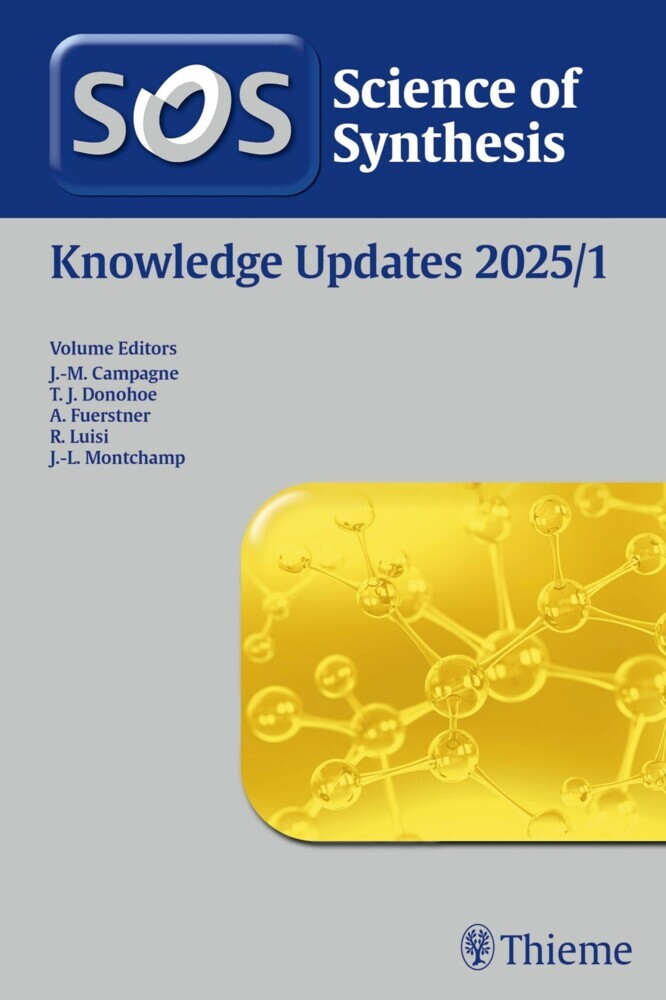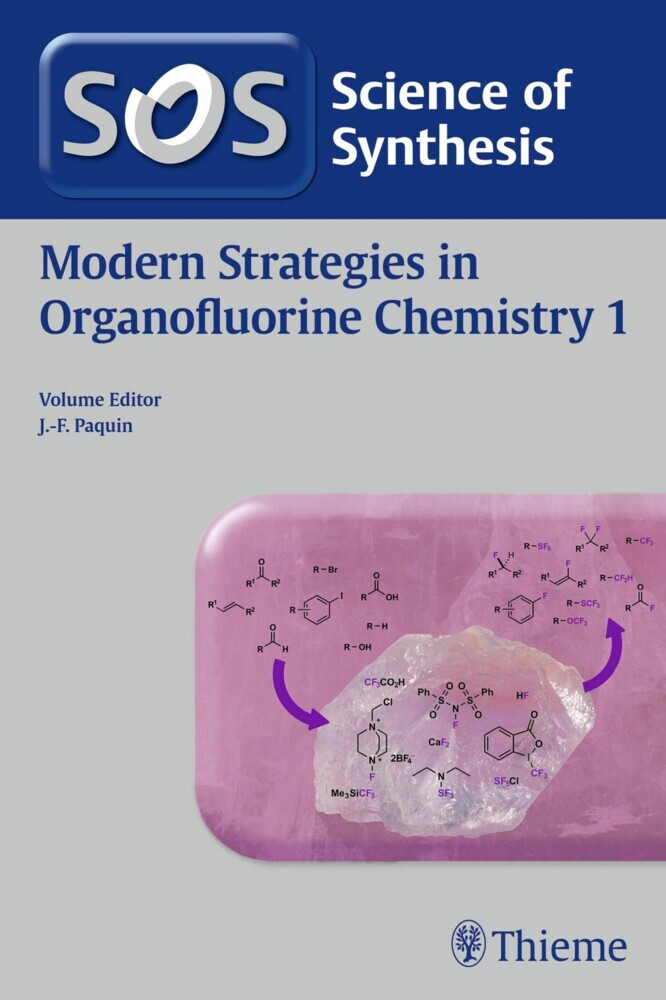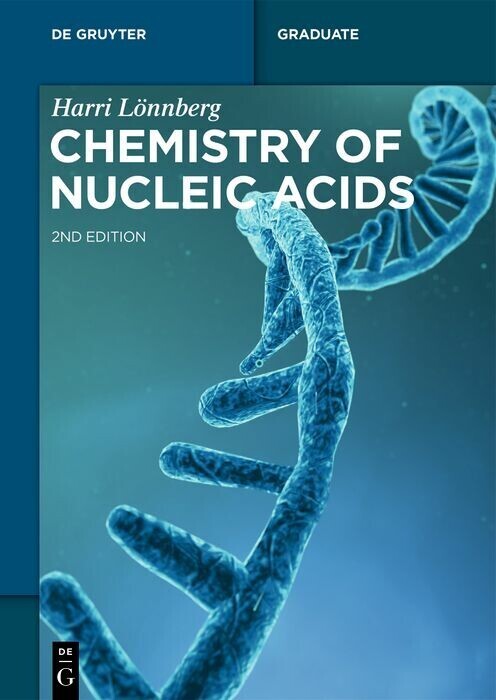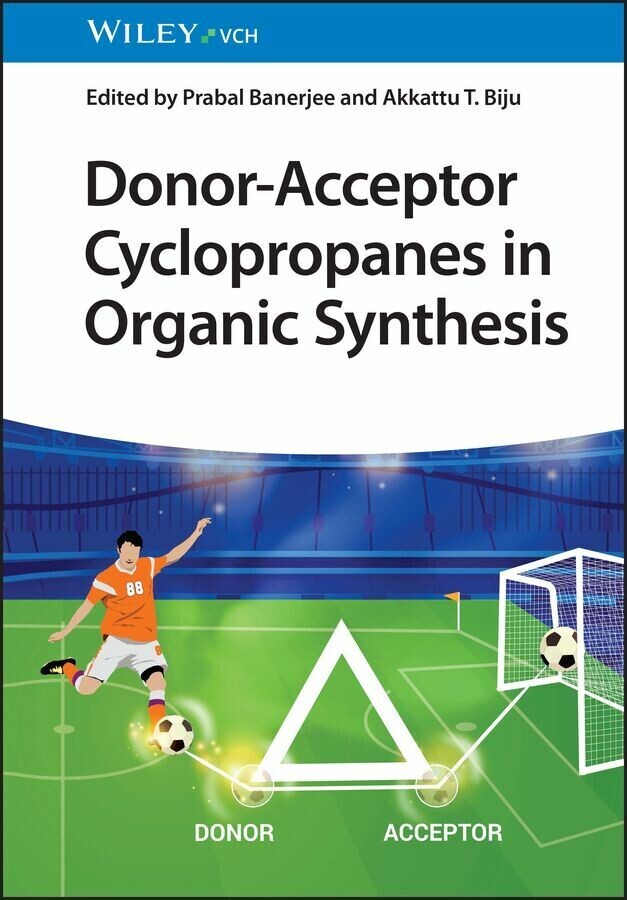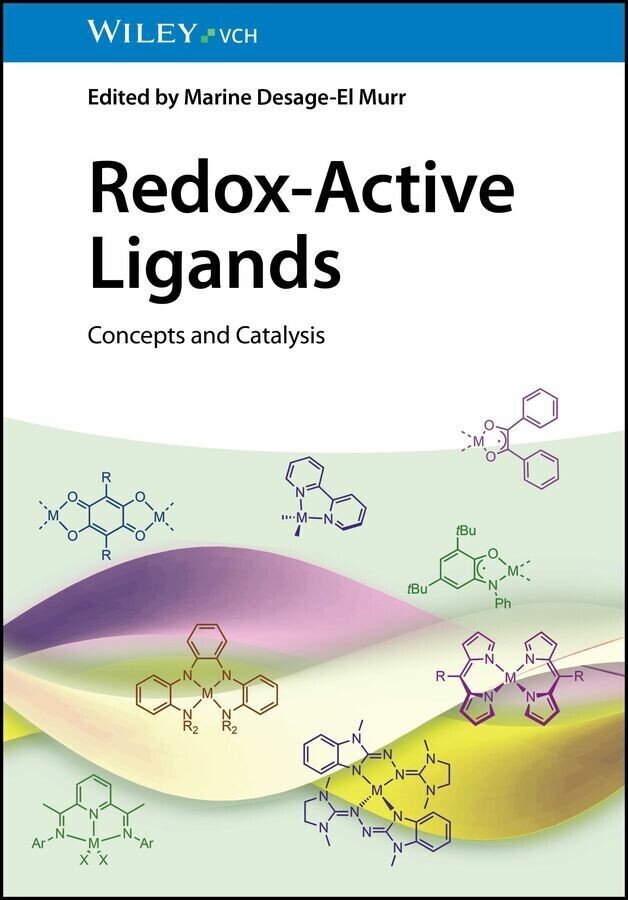Metal Catalyzed Cross-Coupling Reactions and More
Metal Catalyzed Cross-Coupling Reactions and More
This three volume book is the follow-up handbook to the bestselling volume 'Metal-Catalyzed Cross-Coupling Reactions', the definitive reference in the field. In line with the enormous developments in this area, this is not a new edition, but rather a new book in three volumes with over 50% more content. This new content includes C-H activation, shifting the focus away from typical cross-coupling reactions, while those topics and chapters found in de Meijere/Diederich's book have been updated and expanded. With its highly experienced editor team and the list of authors reading like an international Who's-Who in the field, this work will be of great interest to every synthetic chemist working in academia and industry.
Armin de Meijere became Professor of Organic Chemistry at the University of Hamburg in 1977, and took up the same chair at the University of Gottingen in 1989. Since 2006 he is emeritus professor of the University of Gottingen.
Armin de Meijere has been visiting professor at universities in the USA, Israel, Italy, France, Spain, Japan, Taiwan, as well as at the Indian Institute of Science in Bangalore. He was elected a member of the Norwegian Academy of Sciences and Letters in 1992, and in 1996 received the Alexander von Humboldt-Gay Lussac Prize of the French Ministry for Higher Education and Research. In 1997 he was elected member of the Braunschweigische Wissenschaftliche Gesellschaft, and as an Honorary Professor of the St. Petersburg State University, Russia. He was awarded the 'Adolf-von-Baeyer Medal' by the Gesellschaft Deutscher Chemiker in 2005 and received the title Doctor honoris causa by the Russian Academy of Sciences in 2009.
He is and has been editor or member of the Editorial Board for quite a number of scientific journals, periodicals and books, while his own achievements have been published in over 710 publications.
Stefan Brase was born in Kiel, Germany, in 1967 and studied chemistry in Gottingen, Bangor (UK) and Marseille (France). In 1995, he obtained his doctorate after working with Armin de Meijere at the University of Gottingen. After post-doctoral appointments at Uppsala University, Sweden (J.-E. Backvall) and The Scripps Research Institute, La Jolla, USA (K. C. Nicolaou), he began his independent research career at the RWTH Aachen associated with Dieter Enders in 1997 and finished his habilitation in 2001. He became Professor at the University of Bonn that same year. Since 2003, he is Full Professor at the University of Karlsruhe - in October 2009 renamed to the Karlsruhe Institute of Technology. Stefan Brase has published more than 300 publications and is recipient of the ORCHEM award in 2000. His research interests include methods in drug discovery (including drug delivery), combinatorial chemistry towards the synthesis of biologically active compounds, total synthesis of natural products and nanotechnology.
Martin Oestreich (born in 1971 in Pforzheim/Germany) is currently Professor of Organic Chemistry at the Technische Universitat Berlin. He received his diploma degree with Paul Knochel (Marburg, 1996) and his doctoral degree with Dieter Hoppe (Munster, 1999). After a two-year postdoctoral stint with Larry E. Overman (Irvine, 1999-2001), he completed his habilitation with Reinhard Bruckner (Freiburg, 2001-2005) and was appointed as Professor of Organic Chemistry at the Westfalische Wilhelms-Universitat Munster (2006-2011). He also held visiting positions at Cardiff University in Wales (2005) and at The Australian National University in Canberra (2010).
Armin de Meijere became Professor of Organic Chemistry at the University of Hamburg in 1977, and took up the same chair at the University of Gottingen in 1989. Since 2006 he is emeritus professor of the University of Gottingen.
Armin de Meijere has been visiting professor at universities in the USA, Israel, Italy, France, Spain, Japan, Taiwan, as well as at the Indian Institute of Science in Bangalore. He was elected a member of the Norwegian Academy of Sciences and Letters in 1992, and in 1996 received the Alexander von Humboldt-Gay Lussac Prize of the French Ministry for Higher Education and Research. In 1997 he was elected member of the Braunschweigische Wissenschaftliche Gesellschaft, and as an Honorary Professor of the St. Petersburg State University, Russia. He was awarded the 'Adolf-von-Baeyer Medal' by the Gesellschaft Deutscher Chemiker in 2005 and received the title Doctor honoris causa by the Russian Academy of Sciences in 2009.
He is and has been editor or member of the Editorial Board for quite a number of scientific journals, periodicals and books, while his own achievements have been published in over 710 publications.
Stefan Brase was born in Kiel, Germany, in 1967 and studied chemistry in Gottingen, Bangor (UK) and Marseille (France). In 1995, he obtained his doctorate after working with Armin de Meijere at the University of Gottingen. After post-doctoral appointments at Uppsala University, Sweden (J.-E. Backvall) and The Scripps Research Institute, La Jolla, USA (K. C. Nicolaou), he began his independent research career at the RWTH Aachen associated with Dieter Enders in 1997 and finished his habilitation in 2001. He became Professor at the University of Bonn that same year. Since 2003, he is Full Professor at the University of Karlsruhe - in October 2009 renamed to the Karlsruhe Institute of Technology. Stefan Brase has published more than 300 publications and is recipient of the ORCHEM award in 2000. His research interests include methods in drug discovery (including drug delivery), combinatorial chemistry towards the synthesis of biologically active compounds, total synthesis of natural products and nanotechnology.
Martin Oestreich (born in 1971 in Pforzheim/Germany) is currently Professor of Organic Chemistry at the Technische Universitat Berlin. He received his diploma degree with Paul Knochel (Marburg, 1996) and his doctoral degree with Dieter Hoppe (Munster, 1999). After a two-year postdoctoral stint with Larry E. Overman (Irvine, 1999-2001), he completed his habilitation with Reinhard Bruckner (Freiburg, 2001-2005) and was appointed as Professor of Organic Chemistry at the Westfalische Wilhelms-Universitat Munster (2006-2011). He also held visiting positions at Cardiff University in Wales (2005) and at The Australian National University in Canberra (2010).
1;Metal-Catalyzed Cross-Coupling Reactions and More;5 1.1;Contents to Volume 1;7 1.2;Preface;33 1.3;List of Contributors;35 1.4;Chapter 1 Mechanistic Aspects of Metal-Catalyzed C,C- and C,X-Bond Forming Reactions;41 1.4.1;1.1 Mechanisms of Cross-Coupling Reactions;41 1.4.1.1;1.1.1 The Earlier Mechanistic Proposal: The Stille Reaction;42 1.4.1.2;1.1.2 The Oxidative Addition;43 1.4.1.2.1;1.1.2.1 Cis-Complexes in the Oxidative Addition;44 1.4.1.2.2;1.1.2.2 The Role of Alkene and Anionic Ligands;45 1.4.1.2.3;1.1.2.3 Cross-Couplings in the Presence of Bulky Phosphines;46 1.4.1.2.4;1.1.2.4 N-Heterocyclic Carbenes as Ligands;52 1.4.1.2.5;1.1.2.5 Palladacycles as Catalysts;53 1.4.1.2.6;1.1.2.6 Involvement of Pd(IV) in Catalytic Cycles;54 1.4.1.2.7;1.1.2.7 Oxidative Addition of Stannanes to Pd(0);56 1.4.1.3;1.1.3 The Transmetallation in the Stille Reaction;56 1.4.1.3.1;1.1.3.1 Isolation of the Transmetallation Step;56 1.4.1.3.2;1.1.3.2 Dissociative Mechanistic Proposals;58 1.4.1.3.3;1.1.3.3 Cyclic and Open Associative Transmetallation;59 1.4.1.3.4;1.1.3.4 The Copper Effect;63 1.4.1.3.5;1.1.3.5 Transmetallation in the Suzuki-Miyaura Reaction;64 1.4.1.3.6;1.1.3.6 Transmetallation in the Negishi Reaction;67 1.4.1.3.7;1.1.3.7 Transmetallation in the Hiyama Reaction;68 1.4.1.3.8;1.1.3.8 Couplings Catalyzed by Copper and Gold;70 1.4.1.3.9;1.1.3.9 Couplings Catalyzed by Iron and Cobalt;72 1.4.1.4;1.1.4 Reductive Elimination;73 1.4.2;1.2 Palladium-Catalyzed a-Arylation of Carbonyl Compounds and Nitriles;75 1.4.3;1.3 Formation of C-X (X = N, O, S) Bonds in Metal-Catalyzed Reactions;76 1.4.3.1;1.3.1 Reductive Elimination to Generate C-N, C-O, and C-S Bonds from Organopalladium(II) Complexes;79 1.4.3.2;1.3.2 Nickel- and Copper-Catalyzed Formation of C-X Bonds;84 1.4.4;1.4 Summary and Outlook;86 1.4.5;List of Abbreviations;86 1.4.6;References;87 1.5;Chapter 2 State-of-the-Art in Metal-Catalyzed Cross-Coupling Reactions of Organoboron Compounds with Organic Electrophiles;105 1.5.1;2.1 Introduction;106 1.5.1.1;2.1.1 Catalytic Cycle;106 1.5.1.2;2.1.2 Improvements toward More Efficient Cross-Coupling Conditions;109 1.5.1.2.1;2.1.2.1 Development of New Phosphine and NHC Ligands;109 1.5.1.2.2;2.1.2.2 Usage of Masked Boron Derivatives as Cross-Coupling Partners;110 1.5.1.2.3;2.1.2.3 Lewis Acids as Additives;112 1.5.1.2.4;2.1.2.4 Adjusting the Nucleophilicity of Organoboron Cross-Coupling Partners;113 1.5.1.2.5;2.1.2.5 Copper Salts as Additives;114 1.5.2;2.2 Advances in Cross-Coupling Reactions for the Formation of C(sp2)-C(sp2) Bonds;115 1.5.2.1;2.2.1 Background;115 1.5.2.2;2.2.2 Recent Developments in the Use of New Electrophilic Coupling Partners;115 1.5.2.2.1;2.2.2.1 Chlorides;115 1.5.2.2.2;2.2.2.2 Fluorides;119 1.5.2.2.3;2.2.2.3 Pseudohalides;122 1.5.2.3;2.2.3 Recent Developments in Organoboron Cross-Coupling Partners;132 1.5.2.3.1;2.2.3.1 Trifluoroborate Salts;133 1.5.2.3.2;2.2.3.2 N-Methyliminodiacetic Acid (MIDA) Boronates;137 1.5.2.3.3;2.2.3.3 Other Organoboron Cross-Coupling Partners;139 1.5.2.4;2.2.4 Synthesis of Enantiomerically Enriched Atropisomers;141 1.5.3;2.3 Advances in the Cross-Coupling Reactions for the Formation of C(sp3)-C(sp2) or C(sp3)-C(sp3) Bonds;143 1.5.3.1;2.3.1 Background;143 1.5.3.1.1;2.3.1.1 Stereochemistry;144 1.5.3.2;2.3.2 Cross-Couplings between Unsaturated sp2 Carbon Centers and sp3 Carbon Centers;145 1.5.3.2.1;2.3.2.1 Cross-Couplings between sp3 Alkyl Halides and sp2 Alkenyl or Aryl Boron Derivatives;145 1.5.3.2.2;2.3.2.2 Cross-Couplings between sp3 Alkyl Boron Derivatives with sp2 Alkenyl or Aryl Halides;150 1.5.3.3;2.3.3 Cross-Couplings between sp3 Carbon Centers with sp3 Carbon Centers;157 1.5.3.3.1;2.3.3.1 Cross-Couplings between Achiral Substrates;157 1.5.3.3.2;2.3.3.2 Stereoselective Cross-Coupling Reactions of sp3 Alkyl Halides with sp3 Alkylboranes;158 1.5.4;2.4 Experimental Procedures;161 1.5.4.1;2.4.1 2,6-Dimethoxy-2',6'-dimethylbiphenyl (55);161 1.5.4.2;2.4.2 4-Methoxybiphenyl (R = C(O)NEt2, R' = H, Ar = 4-m
Meijere, Armin de
Bräse, Stefan
Oestreich, Martin
| ISBN | 9783527655618 |
|---|---|
| Artikelnummer | 9783527655618 |
| Medientyp | E-Book - PDF |
| Copyrightjahr | 2013 |
| Verlag | Wiley-VCH |
| Umfang | 1576 Seiten |
| Sprache | Englisch |
| Kopierschutz | Adobe DRM |

